Interested in the history of the Big One, “Dubba, Dubba Two”? Here’s a list of some of my favorite World War II books. Emphasis on personal accounts. These are not stuffy histories either. These are real page turners. Enjoy!
- Jeremy
Thank you, Jeremy, this is awesome! I read Company Commander and Guadalcanal Diaries when I was a kid. My favorite memoir of the war must be Iron Cross Sniper on the Eastern Front. Now I've got to read about the Red Ball Express.
Our readers are encouraged to add their picks, so that this might help Nathan in selecting his reads.
-James
- Ghost Soldiers “The Epic Account of World War II’s Greatest Rescue Mission” by Hampton Sides. Anchor Books 2002. The story of the famous Cabanatuan POW raid. On 28 January 1945, 121 picked soldiers from the elite 6th Ranger battalion and the elite Alamo Scouts infiltrated 30 miles behind the Japanese lines on the Philippine island of Luzon to rescue 513 American Prisoners of War (POW). The POWs were the sick and starved survivors of the infamous Bataan Death march. The Rangers and Alamo Scouts received invaluable intelligence and assistance from Filipino Guerillas. The raid was an overwhelming success with the loss of only two rangers killed and one POW who tragically died of a heart attack as he was rescued. The collective and individual experiences of the rescuers and the rescued alike is told in a thrilling style. See also the 2005 movie, “The Great Raid”, based on this book.
- Raid “The Untold Story of Patton’s Secret Mission” by Richard Baron, Major Abe Baum and Richard Goldhurst. Dell books. In March 1945 General Patton sent a two company tank and armored infantry task force commanded by Captain Abe Baum on a secret mission to liberate the American prisoners of war held some 50 miles behind the front line in a German POW camp located inside the German Army’s Hammelburg training area. Patton feared that the POW’s might be massacred by fanatical Germans in the last death throes of the Nazi Reich. Since Patton’s own son-in-law was one of the American POWs held in the Hammelburg camp, Patton was especially concerned about preventing such an atrocity from occurring. Unlike the Cabanatuan POW Raid some two months before in the Philippines, the Hammelburg Raid was a spectacular failure. Despite the dash and courage of the soldiers who executed it. What happened? Read the book! The experiences of both the raiders and the POWs are told in colorful detail. A thrilling story. A real page turner of a book.
- Currahee; The Road to Arnhem ; The Seven Roads to Hell ; Beyond the Rhine by Donald R. Burgett. Dell Books. Vivid, hair-raising stories of infantry combat in World War II. These four books recount the war experience of Donald Burgett when he was a 19 year old paratrooper in the U.S. Army’s 101st Airborne Division. He participated in the Normandy Invasion, the Battle of Arnhem, the Battle of the Bulge and in the Allied drive into the heart of Germany. Great reading. Books you can’t put down. Burgett is a natural story teller. Burgett says he was aided by the notes and journals he compiled at the end of the war; but he seems to have been aided by a gift for observation and an incomparable memory of events as well. “People ask me how I can remember all these things; I say how can I forget!”
- Company Commander by Charles B. Macdonald. Buford books. Charles Mac Donald was a 21 year old Army Captain when he was placed in command of ‘I’ company and later ‘G’ company of the 23rd Infantry Regiment, 2nd Infantry Division. The book tells the tale of Macdonald’s seven months in combat as a company commander. His unit started out holding defensive positions on the Siegfried Line on 3 October 1944 and went on to fight in the Battle of the Bulge, the crossing of the Rhine in March 1945, the push into the heart of Germany in April and finally into occupied Czechoslovakia in May 1945. A great story of small unit command in savage combat. First published in 1947, it continues to be a great read and great illustration of what it’s like to be an infantry leader at the “sharp end of the spear”.
- If You Survive by George Wilson. Ivy Books (Ballantine Books) 1987. “If You survive your first day, I’ll promote you.” That is what Second Lieutenant George Wilson’s regimental commander promised him and several other new replacement infantry lieutenants when he reported to the 24th Infantry Regiment of the 4th Infantry Division in Normandy on 12 July, 1944. After 3 days of combat Wilson’s 40 man rifle platoon was down to six effectives, including himself. Lieutenant Wilson survived his first battle and many others to follow, eventually becoming the company commander. Nevertheless it was many months before the Army bureaucracy deigned to promote him (the more things change the more they stay the same). Exciting tales of combat. Another book you can’t put down.
- To Hell and Back by Audie Murphy. Bantam War Book. The story of the most highly decorated American serviceman in WWII, told in his own words. Exciting reading. Audie Murphy fought with the 3rd Infantry Division in Sicily, Italy, southern France and Germany. See also the movie of the same name with Audie Murphy playing himself. The movie was filmed at Fort Lewis and Yakima Training Center Washington. In the battle scene depicting the action that won Murphy his Medal of Honor, an M4 Sherman Tank was used instead of an open-topped M-10 Tank Destroyer as was present in real life. Murphy was said to have been disappointed by this, but apparently the movie company was under budget and could not acquire an M-10 in time to meet the production deadline. The M-10 was largely out of service with the active Army by the time the movie was made (1955), but the Sherman Tank still served. Oh well. Murphy, of course, went on to play the hero in many more western movie productions and on the television series “Whispering Smith” (1961).
- Raider by Charles W. Sasser. St. Martin/’s Paperbacks 2002. The rest of the story behind Ghost Soldiers, as well as the story of the Son Tay prison raid. Private Galen “Kit” Kittleson was one of the “Alamo Scouts” who participated in the Cabanatuan POW rescue along with the company from the 6th Ranger Battalion and the Filipino guerillas. Earlier Kittleson was a member of the Alamo Scout raiding party that rescued Dutch civilians and New Guinea natives held as slave laborers by the Japanese. The Alamo Scouts was a strategic reconnaissance unit formed in the pacific by Sixth Army Commander LTG Walter Kruger. Like so many other unconventional units it was promptly disbanded after the war. Nevertheless it was a ground breaking organization and served as the model for the long range recon patrol units of Vietnam and today (AKA LRRP’s and LRS-D’s). Kittleson rejoined the Army after the war and volunteered for the Special Forces. He served a tour in Vietnam with a Special Forces B Team. Then he volunteered for a super-secret mission that turned out to be the raid to rescue the American POW’s held at Son Tay prison camp in North Vietnam. Thus Galen Kittleson had the distinction of participating in more POW rescue missions than any other individual in the U.S. Armed Forces. Great reading.
- Death Traps: “The Survival of an American Armored Division in World War II” by Belton Cooper. Ballantine books 1998. In tenth months of combat from Normandy to the heart of Germany, the U.S. Army’s Third Armored Division had 500% of all the tanks in the division knocked out. Belton Cooper knows that for a fact because he was an Ordnance Corps lieutenant in the Third Armored Division responsible for recovering and repairing the damaged tanks. A great first person story of armored warfare in World War II. The Third Armored Division earned the nickname “Spearhead” the hard way!
- Combat Officer - A Memoir of War in the Pacific by Charles H. Walker Ballantine Books 2004.The author joined the North Dakota National Guard in the late 1930’s and was later commissioned as an infantry second lieutenant. In October 1940 his National Guard unit, the 164th Infantry Regiment was called to active duty along with numerous other National Guard units. Charles Walker spent the next five years away from home, three of these years in the Pacific Theater, either in combat or preparing for the next combat operation and finally in occupation duty in Japan after the war ended. Thrilling tales of Combat on Guadalcanal (yep it wasn’t just the Marines there), Bougainville and the Philippines. Very funny stories of life and politics in the Army as well.
- Seven Days in January “With the 6th SS Mountain Division in Operation NORDWIND” by Wolf T. Zoepf. The Aberjona Press 2001. What was it like to fight against the U.S. Army during World War II? Wolf T. Zoepf tells the tale. He was a lieutenant with the elite 6th SS Mountain Division. For three years his unit fought in the sub-arctic forests of Russia and Finland. Then his division was moved to the western front to participate in NORDWIND the last major German Offensive in the west, launched on the heels of the Battle of the Bulge in the Low Vosges Mountains along the French-German border. Zopef tells the story of the battle from the perspective of both sides, analyzing their successes and failures. Zoepf gives the men of the US 70th Division high marks for valor, in what was their first battle and at the same time observes that they made many “rookie” mistakes, probably understandably so. What impressed Zoepf and his fellow SS mountain soldiers the most was the Americans’ chivalry and humanity. Such as when an American company proposed a brief truce after a fire-fight in order that the medics from both sides could recover their wounded. As Zoepf wrote, “Schutze (the German company commander) agreed at once. The medics met in “No Man’s Land” and evacuated the wounded to their respective sides. We were stunned. No event could have illustrated more clearly the difference between fighting the Americans and fighting the Russians, to whom such a truce would have been inconceivable.”
-Visions from a Foxhole “A Rifleman in Patton’s Ghost Corps” by William A. Foley Jr. Ballantine Books 2003. Eighteen-year old William Foley was afraid the war would be over before he got to the front, but the war in Europe was far from over when he joined G Company, 2nd Battalion, 302nd Infantry Regiment, 94th Infantry Division on 25th January, 1945. Over the next three days Foley participated in a bloody battle that would leave sixty percent of his battalion dead or wounded. The 94th Division would be engaged in ferocious combat over the next two months to pierce the Siegfried Line and drive across the rugged Saar and Moselle River region of Germany until it reached the banks of the Rhine River. G Company’s toughest fight was against the 6th SS Mountain Division when it launched a savage counter-attack against the 94th Division on 5 March 1945. The author made good use of the 94th Division’s official history (including maps) to place his personal experiences in the larger context of the drive into Germany. Foley was a budding artist when he first joined the Army; he drew numerous sketches of his experiences, many of them right from his foxhole, as the book title alludes to. These poignant illustrations are included in the book and really complement the narrative of the story to “paint a vivid picture” of infantry combat in World War II.
- Fighting Mad by Michael Calvert. Bantam War Book. The story of one of the officers who organized the Chindits in WWII. The Chindits (named after a mythical animal, part lion and part eagle) were a British commando force that wreaked havoc on the Japanese in Burma. Entertaining reading, written with that famous English gift for understatement. Learn tips on jungle fighting as well as why one shouldn't walk too closely behind an elephant, unless one has a change of clothes handy. Read about Mad Mike’s hand to hand fight to the death with a Japanese officer in the middle of a jungle river.
- Panzer Commander The Memoirs of Colonel Hans Von Luck by Hans Von Luck . Dell books 1989. The experience of a German Panzer officer from the Invasion of Poland to the fighting in Normandy and of his captivity in the Soviet Union after the war. Luck participated in the Conquest of France, the Invasion of the Soviet Union and was personally requested by Rommel to lead one of his recon battalions in the Afrika Corps. A very good overview of the German experience in World War II. I have found many of the personal accounts written by WWII German officers to be very dull. They tend to read alternately like official after action reports and travelogues of all the places the author has been and the people he met. They also are inexplicably short on the details of the organization, plans, tactics and equipment used by the German Army or about their impressions of the weapons and tactics used by their opponents. The very things that a foreign reader would like to learn about. Luck tends to follow that pattern as well. Nevertheless, I still enjoyed his book because of the shear breadth of Luck’s experiences and because he is a better story teller than most of his contemporaries.
-Soldat “Reflections of a German Soldier 1936-1949” by Siegfried Knappe with Ted Brusau. A Dell Book. Siegfried Knappe was an artillery officer in the German Army during World II. His unit was a horse drawn artillery battalion in a foot infantry division. Despite the German Army’s innovations in mechanized warfare, two-thirds of the German infantry divisions participating in the invasion of Russia in 1941 relied predominantly on horse drawn transports. In spite of Germany’s technical prowess its automotive industry was unable to manufacture trucks on the same scale as American industry (Von Luck was astonished that America was able to not only supply its own forces with an abundance of trucks but was also able to give 150,000 GMC 2.5 Ton trucks to the Russians). Knappe worked his way up the ranks and was selected for service as a general staff officer. A prestigious assignment in the German Army in those days. Like Von Luck, Knappe spent years in captivity in the Soviet Union after the war. During their captivity the Soviets endeavored to indoctrinate Knappe and his comrades so that they would become Communist activists and agents provocateur in the sectors of Germany occupied by the other allied powers. Of course many of the same methods the Russians used against the German prisoners were eventually used against American prisoners of the Communists during the Korean and Vietnam Wars. An interesting story of life in the German Army in peace and war and of captivity in the Soviet “GULAG” prison camps.
- Woodbine Red Leader “A P-51 Mustang Ace in the Mediterranean Theater” by George Loving Lt. Gen USAF (ret). Ballantine Books 2003. A good look at how the “other half” of the Army lived during WWII; you know, the part that became the U.S. Air Force in 1947. George Loving was inducted into the US Army Air Corps as an aviation cadet on 10 June 1942 and was subsequently assigned as a fighter pilot with the 15th Air Force in North Africa and Italy. He flew 151 combat missions from 10 October, 1943 until 21 August 1944 and scored five kills in air to air combat. The Eighth Air Force which operated out of England during WWII seems to get all the attention from both the historians and the Hollywood movie makers; the many exploits of the Fifteenth Air Force in the Mediterranean Theater seem to get ignored. This book highlights many of the astounding operations of the 15th over southern and eastern Europe. A largely unheralded success story is the air rescue of over 1500 U.S. airman held as POWs in Romania after Romania switched sides and joined the Soviets in late August 1944.
-Recon Scout by Fred H. Salter. Ballantine Books 2001. Fred Salter started out as a teenage soldier in the horse cavalry and went to war as a motorized cavalry trooper. Salter fought through Algeria, Tunisia, Sicily and Italy. Salter was a young woodsman from the mountains of Pennsylvania. He was often sent on lone recons of enemy positions by his troop commanders. By Salter’s own account he suffered terribly from feelings of self-doubt and survivor guilt as well from confronting the horrors of war during the almost two years he was overseas in the war zone. His story is a great case history of post-traumatic stress Disorder (PTSD). Another interesting case study in combat stress and leadership is the incident in North Africa when Salter’s troop refuses an order to attack a hard objective they had been thrown back from in several previous assaults. Even the troop commander refused the squadron commander’s order to launch a night attack on the enemy held hill. The squadron commander sent the troop commander and all those soldiers who refused to attack to the rear under arrest. He led the attack himself with the remainder of the troop and took the hill.
-Roll Me Over “An Infantryman’s World War II” by Raymond Gantter, Presidio War Classic (Ballantine Books 1997). Raymond Gantter was thirty years old, married with two children and the program manager of the leading radio station in Syracuse, New York when he turned down his third draft deferment and entered the U.S. Army Infantry. Gantter was a college graduate which made him a rare bird for the Infantry in those days, since the Army Air Corps had dibs on the majority of college educated men during WWII. He also played piano with jazz bands since age 14. He rose through the ranks from private to platoon sergeant and was finally given a battlefield commission as a second lieutenant. Gantter spoke some German he had learned both from his Grandfather and during a tourist trip to Germany in 1932. He was politically active and an ardent supporter of FDR. He arrived in the European Theater in September and spent the next couple of months waiting to be assigned to a unit. In Late November 1944 he finally joined G Company, 2nd Battalion, 16th Infantry, 1st Infantry Division. Gantter’s unit was in a quiet sector during the Battle of the Bulge but then got into the thick of the fighting during the push across the Rhine. Gantter ended the war in Czechoslovakia and served on occupation duty in Bamberg Germany until returning to New York on 1 January, 1946. Gantter completed his journal in 1949 and it was published following his death in 1985 by his children. Many of the personal WWII accounts that have been published in the last 20 years or so were written by men who were 18 to 22 when they first entered the Army. Gantter on the other hand was much older, more educated and worldlier. Thus his perceptions and observations are different from the younger soldiers. To Gantter the war was less a big adventure and more an odious but necessary chore that had to be completed before he could return to his family and civilian career. Gantter was also an idealist who had no sympathy for the Nazi’s or with German farmers who had slave laborers, but at the same time he expressed outrage and disappointment with Americans who misbehaved and took improper advantage of a situation. Younger soldiers fresh out of high school and free from parental supervision often relished an opportunity to act in ways that were prohibited in civil society and were less troubled by not observing the “letter of law” in a given situation (like in looting and blowing things up). But as Gantter himself observed, given the opportunities that the chaos of war presented to commit crimes it is noteworthy and laudable that the over whelming majority of American soldiers stayed honest. A very interesting personal journal. The book is not as action packed as many of the other personal accounts included in this list, since Gantter spent many months mostly sitting, waiting and freezing in a foxhole or assembly area while his unit guarded quiet sectors or sat in reserve. Nevertheless Gantter certainly earned his Combat Infantryman Badge (CIB) when his company became engaged in fierce fighting in the interior of Germany. It shows how every person’s experience in war can be different and how people’s perceptions of events can differ.
-Alamein to Zem Zem by Keith Douglas. Bantam War Book. The journal of a British second lieutenant who served with a tank squadron in the latter stages of the battle of El Alamein. A good study of interpersonal relationships in a military organization, as well as tales of tank combat in the Western Desert.
-Infantry Soldier “The Horror Endured by A U.S. Infantryman” by W.Y. Boyd. Celeb Publishing 1995. Also published as The Gentle Infantryman. A fictionalized account of a young man’s experience as an Infantry Soldier in Europe from the German “Nordwind” offensive in Alsace France in January 1945 until the end of the war in Austria 8 May, 1945. The account is well written and realistic. An absorbing “everyman’s” experience of the war, on par with Remarque’s All Quiet on the Western Front and Crane’s The Red Badge of Courage. The story is no doubt based on author William Young Boyd’s personal experiences, since Boyd himself served as a U.S. Army Infantry soldier in World War II in the same region the novel takes place in. The names have obviously been changed, since even the protagonist’s parent unit (the 15th Infantry Division) never actually existed. Nevertheless, the characters and situations in the book are representative of a great many of the small incidents and events that occurred in infantry units throughout the ETO. This makes the account a good historical primer as well as an entertaining tale. Plus the protagonist in the story serves first in an infantry regiment’s anti-tank gun platoon and then in a mine platoon, so the story provides a slightly different perspective than that given in many other accounts of infantry combat in WWII. W.Y. Boyd was also chairman of the board of the Boyd Steamship Corporation in Panama and passed away in 2002. Interestingly enough, science fiction writers John Ringo and Tom Kratman featured William Young Boyd as a character in their collaborative novels Yellow Eyes, and The Tuloriad. Both novels were based on the “Posleen War/ Legacy of the Aldenata” series created by Ringo about an alien invasion of earth early in the 21st Century.
-When the Odds Were Even – The Vosges Mountain Campaign, October 1944 – January 1945 by Keith E. Born. Ballantine Books 1994, 2006. The Vosges Mountain range is 30 miles long, 90 miles wide and runs north to south parallel to the Rhine River in the much fought over France province of Alsace. The southern portion with peaks over 4000 feet is known as the High Vosges and the northern portion with 3000 foot peaks is known as the Low Vosges (or the Hardt in Germany. In the fall of 1944 Alsace was still a province in the Greater German Reich so German forces prepared to defend it fiercely against the U.S. Seventh Army. The Vosges Mountains was an excellent place for a defense line, much like the Germans’ Gothic line in Italy and the Germans fully expected to be able to hold the line against the advancing Americans until April 1945. Regardless, “in three months of fighting the U.S. Seventh Army did what no army in history had ever done before- conquer an enemy defending the Vosges Mountains.” In the decades following Vietnam it became fashionable in American military circles to criticize the way the U.S. Army trained and operated. In particular many of these critics were of the opinion that the U.S. Army needed to adopt “German” methods of training and fighting if it wanted to win future wars decisively and to defeat the Soviet Union in particular. As author Bonn points out these critics seem wont to overlook the salient fact that the U.S. Army did defeat the German Army during World War II, so the U.S. Army’s methods could not have been that deficient. And it was not simply a matter of American numerical and material superiority either. In the Vosges campaign the German defenders and the American attackers were roughly equal in numbers and in fire support and logistics support. In any event by 1944 the tactical doctrine of the German and American armies was nearly identical; by that stage of the war both armies tended to use tactics that were proven by experience to actually work in battle with modern weapons. If anything the U.S. military of the Vietnam War era (and in particular the civilian political leaders of that military) tended to ignore the lessons learned during WWII (see On Strategy and On Strategy II by Harry G. Summers). Author Bonn does an excellent “apples to apples” comparison examining the respective doctrine, tactics and training of the German and American forces meeting in the Vosges. The author gives an excellent account of the fighting from October 1944 to the final German “Nordwind” Offensive in January, 1945. The Vosges Campaign has been generally overlooked by post-war historians. However, a great many excellent personal accounts of World War II combat by participants in the Vosges Campaign have been published in recent years. Many are recommended in this annotated bibliography. This book helps place those personal experiences into the context of the "Big Picture” of what happened in the last year of World War II in Europe. See the movie “Go for Broke” (1951) about the Nisei 442nd Infantry Regiment which participated in the Vosges Campaign. Further, it is worthwhile to compare the U.S. Seventh Army’s Vosges Campaign with the U.S. First Army’s Hurtgen Forest Campaign in nearly identical terrain on the German-Belgian border. The First Army’s Hurtgen Forest operation was a bloody mess largely because the First Army units made all the mistakes that the Seventh Army units avoided. See also the movie “Decision Before Dawn” (1951), about intelligence operations in the closing days of WWII, which was filmed in Europe and features actual soldiers of the Seventh Army as extras.
-The Road to Victory “The Untold Story of World War II’s Red Ball Express” by David P. Colley. Warner Books 2000. As they say in the Transportation Corps, “Nothing Happens Until Something Moves”. One of the major advantages the U.S. Army had over its enemies during World War II was the quality and quantity of its truck fleet and that fleet’s incomparable ability to move forces and supplies from the seaports, airports and railheads to the front. John Keegan, the famous English historian, was a school boy during WWII. As a lad, Keegan was greatly impressed by the size and quality of the American trucks he saw: “More striking still were the number, size and elegance of the vehicles in which they (the Americans) paraded about the countryside in stately convoys. The British Army’s transport was a sad collection of underpowered makeshifts, whose dun paint flaked from their tin pot bodywork. The Americans traveled in magnificent, gleaming olive-green, pressed steel, four-wheel-drive juggernauts, decked with what car salesmen would call optional extras of a sort never seen on their domestic equivalent – deep treaded spare tyres, winches, towing cables, fire extinguishers. They were towering six-by-sixes, compact and powerful Dodge four-by-fours and….tiny and entrancing jeeps.”
Seventy percent of the truck drivers in the transportation units that made up the famous “Red Ball Express” in Europe were black. Of course that says a lot about how advanced the American logistics services were (as well as the society that produced them), when even members of a disadvantaged ethnic minority had the technical know-how necessary to keep such a vast transportation system operating under the adverse conditions encountered in Normandy and beyond. The success of the Red Ball Express is a tribute to the American automotive industry that made the trucks and to the skill and perseverance of the soldiers who drove them.


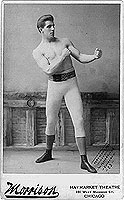



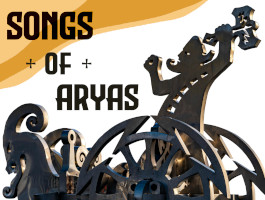
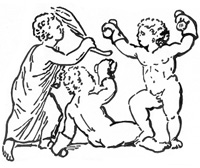
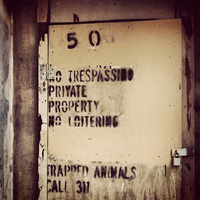
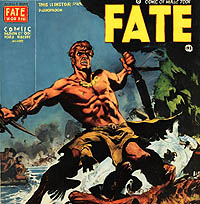

I recommend horror/sci-fi writer Richard Matheson's novel about his experience as a young infantryman in WW2: en.wikipedia.org/wiki/The_Beardless_Warriors
I really like Matheson and this was not in the collection I have. Thank you Baruch.
Oh my bad James. I neglected to mention the movie "Red Ball Express" (1952) starring Jeff Chandler and Sidney Poitier. Enjoy!
See also:
- "Thunderbolt" by Robert S. Johnson
-"Ba, Ba Black Sheep" by Gregory "Pappy" Boyington
-"Samurai" by Saburo Sakai, Fred Saito, Martin Caidin
-"The Blond Knight of Germany: A biography of Erich Hartmann" by Raymond Toliver
The true-life adventures of some of history's greatest fighter aces.
No, Bill Boyd died New Years Eve, 2014.
legacy.com/obituaries/nytimes/obituary.aspx?pid=173754843
Note that while he was serving as a grunt in our army, he was still a Panamanian citizen.
Thanks for the clarification, Tom.
theatlantic.com/past/docs/unbound/bookauth/battle/pfint.htm
Paul Fussell's top 3 picks; a lot people consider his book one of the best memoirs of WWII. His personal favorites: Journey With a Pistol, by Neil McCallum; With the Old Breed by Eugene B. Sledge; Flights of Passage Samuel Hynes.
I've read McCallum's Journey With a Pistol. Well, I'm no reviewer but it's quirky in a weird way, after a bombardment they're surveying the damage and notice a dismembered finger on the ground, then the realization, "ugh, it's not a finger." Not sure why but a lot of the vignettes of the book have stuck in my head, maybe more than other books—and vignettes they are as the book is more of a diary. It seems like one of the best ways to survive combat is not to be in the first attack wave (eg Robert Graves memoir Goodbye to All That of WWI, he was in the Third Wave that was called off after the first two had gotten mown down. McCallum's book starts after El Alamein...British infantry.
—not WWII...My War Gone By I miss it So, by Anthony Loyd about his experience in Bosnia-Herzo during the Yugoslave civil war as a freelance photographer. Hard to describe this book but his writing is off the charts imho in terms of his ability to put you at the scene; comic and harrowing at the same time—absurd—spliced with scenes of his heroin addiction when he was back in London...which may put some people off but it fits the chaos of the war...
Goodbye Darkness, by William Manchester.
Quartered Safe Out Here, by George McDonald Fraser.
Both men are great writers.
One of the vignettes in Jeff Cooper's "Fireworks" is an article titled "Kreigsoberst" about the career of Hans-Ulrich Rudel. Today's generation has ruined the word "awesome" by overuse, but it's the only phrase I can think of to describe Rudel's prowess.